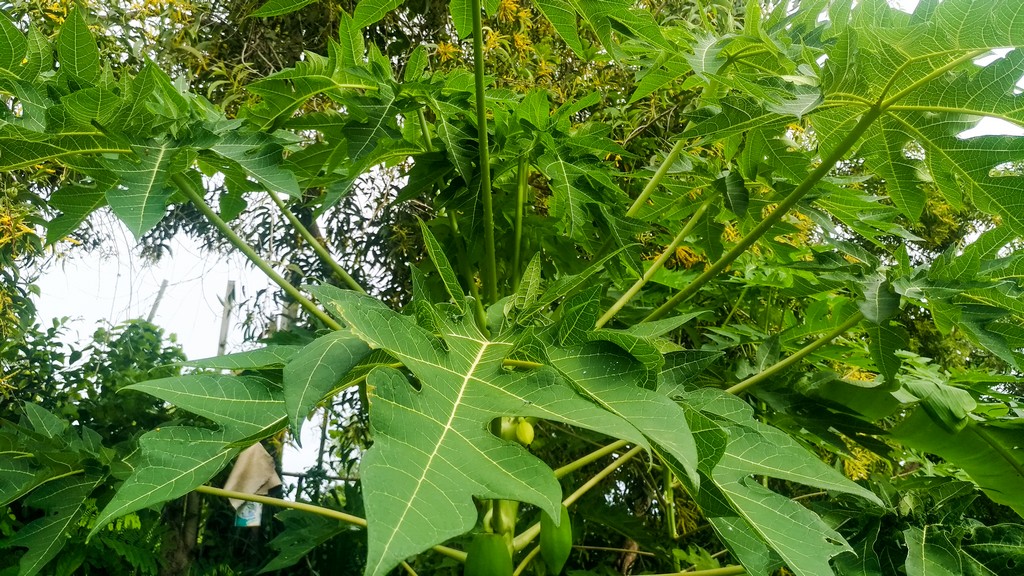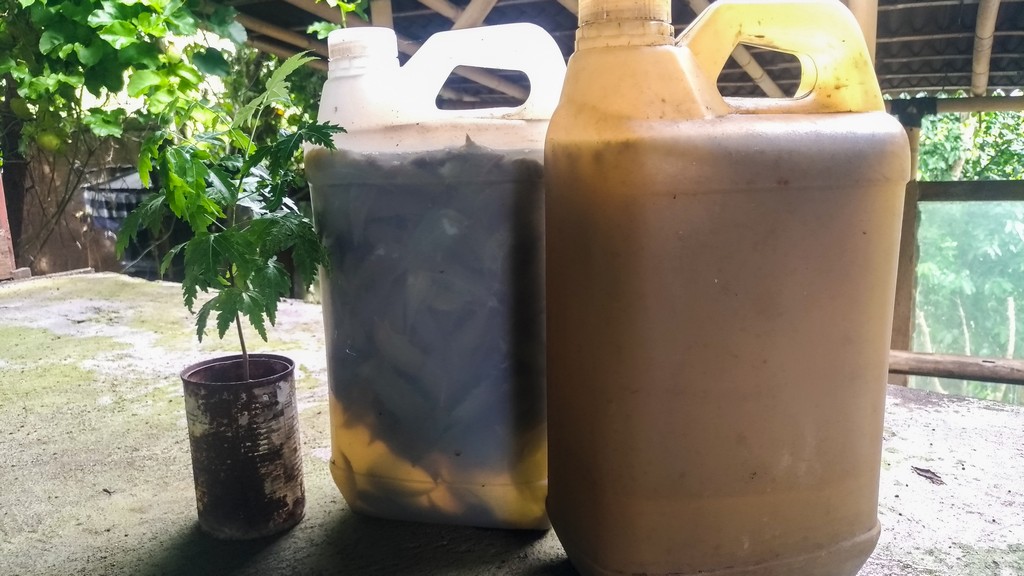Since the beginning of the Green Revolution in the 1960’s, farmers have become dependent on the chemical pesticides to control the pest. Chemical ingredients are not only harmful for natural enemies, but it causes pollution to the environment, and has a negative impact on human health.
R.O.L.E. Foundation’s ZeroWaste Center implements an ecological approach in its garden. The permaculture garden uses compost, which is processed in the ZeroWaste Center. Only organic materials are used for growing the crops, and only natural pesticides are used. The basis for these natural pesticides is neem leaves and papaya leaves, that are harvested from the permaculture garden.

Neem leaves pesticide
Neem is a plant with the scientific name Azadirachta indica. For those who are not familiar with it, it’s an evergreen tree and can be found in tropical and sub-tropical areas. Neem leaf is well known as organic pesticide. The leaf as well as other parts of the tree is also widely used in medicine and for culinary purposes.
Neem pesticide can be used to control caterpillars, grasshoppers, whitefly, and aphids. And we are sharing the recipe from our ZeroWaste Center’s gardener with you:
- Take 500 gram of neem leaves, wash it and chop it for a faster result.
- Mix it with 5 liters of water.
- Put the mixture in the jerry can and let it ferment for around 14 days. To make sure that the solution is ready, see if the cap of the jerry can is bulging.
Papaya leaves pesticide
Another natural pesticide that ZeroWaste Center’s gardener usually makes is papaya leaves pesticide. Papaya leaves contain an active ingredient called “Papain”, that is known to effectively control caterpillars and sucking pets. The papaya leaves pesticide can control termites, aphids, caterpillars and various insects.
The process of making papaya leaves pesticides is the same with neem leaves pesticide, but you can add detergents to make it stronger (optional). Just follow the above recipe, but exchange the neem leaves for the papaya leaves. When adding the detergent, it should be 50 grams of it. Just mix everything before the fermentation process.
How to apply the pesticides to plants?
To apply the pesticide to plants, just spray it to the infected parts. In the ZeroWaste Center’s garden, the pesticides are used as control treatment rather than prevention.
What’s next?
Our gardener is currently planning to make natural pesticides from other parts of the neem tree, like the seeds, and other plants such as tomato leaves and chili. If you are interested in natural pesticides, please let us know. We are happy to share the knowledge!


Recent Comments